You got home with a bag of zucchinis, and you’re not sure how to go about them. How to store zucchinis to keep them fresh?
Or your zucchinis already sit in the fridge for a few days, and you’re wondering how much time do you have before they go bad.
Sounds familiar? If so, you don’t want to miss this article.
In it, we cover storage time and practices for zucchinis and knowing if yours are safe to eat or not. As an extra, I briefly cover how to choose zucchini in the supermarket (or grocery store) so that you get the best bang for your buck when buying this summer squash.
Ready? Let’s dig in.
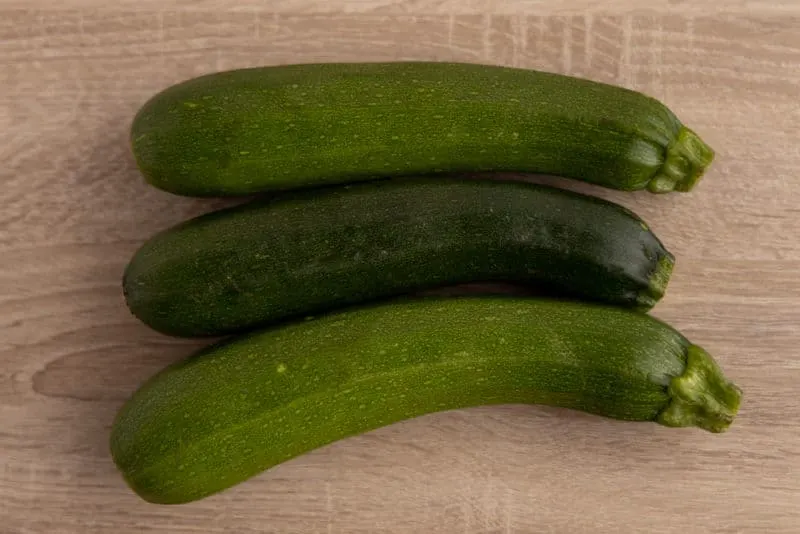
How To Store Zucchini
For best results, keep zucchinis in a plastic bag in the crisper drawer. If you notice any water buildup in that bag, switch to a perforated one or open up the top. For prolonged storage, cut the zucchinis up, blanch and freeze them.
You only need the plastic bag if you know that zucchini will sit in the fridge for like a week or more. If you expect to use it in like 3 to 5 days, you can skip the bag and leave it in the crisper drawer as-is. I do that all the time.
Besides that, remember to wash the zucchini only right before you’re ready to use it. That means refrigerating it unwashed.
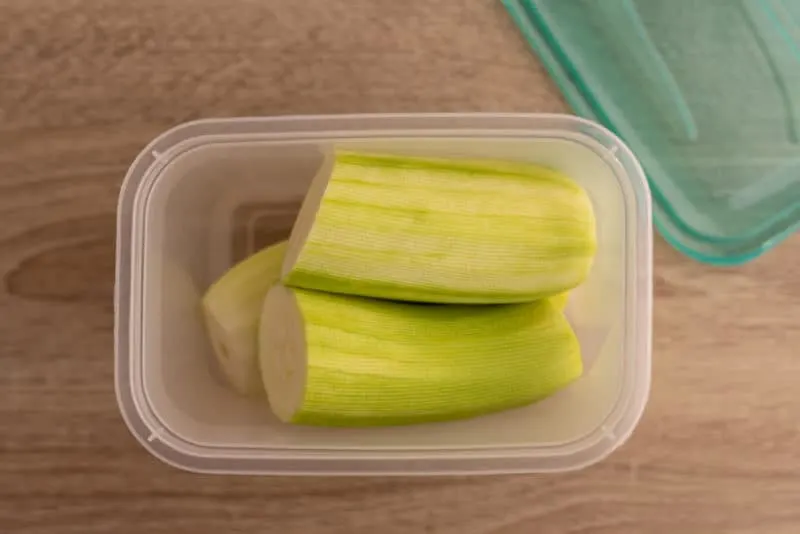
When it comes to pre-cut zucchini and any leftovers (raw or cooked), storing them in an airtight container in the fridge is the way to go.
Can you store zucchini on the counter?
Yes, but only if you plan on using it within a day or two. That’s because the quality of the veggie deteriorates quite quickly at room temperature.
Don’t worry if you left it out overnight.
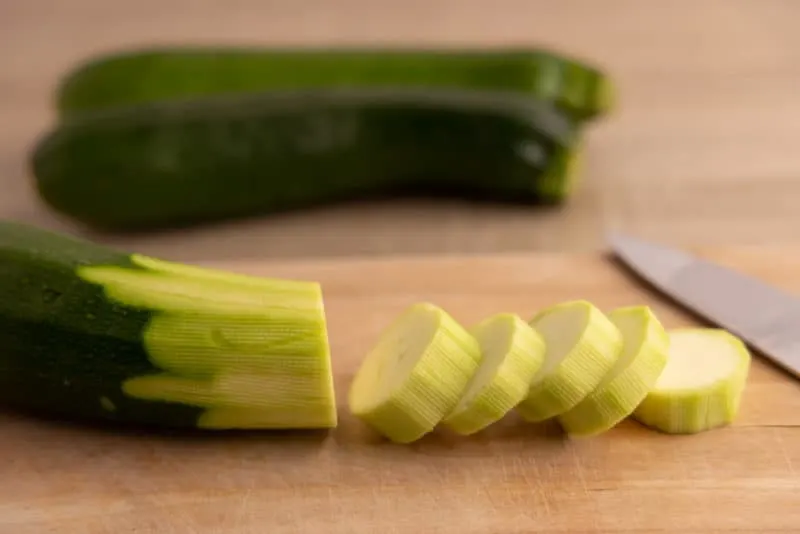
How To Freeze Zucchini
Freezing zucchini is a simple process, but it’s a bit time-consuming. That’s because it involves blanching the veggie so that it better retains its texture and taste after freezing and thawing.
Here’s how you do it ([USU]):
- Prep the veggies. Wash and cut the squash into half-inch slices.
- Blanch the zucchini. Bring a pot of water to a boil, and transfer the veggie into the water. Try to keep the water boiling at all times. Keep the zucchini in the water for 3 minutes, then quickly cool it by plunging it into a pot of cold water (possibly with some ice cubes) for another 3 minutes.
- Drain the zucchini. You can let the slices sit on a kitchen towel for 15 minutes, then remove any excess water with another kitchen towel or using paper towels.
- Portion and package. Divide the veggies into dish-sized portions, and transfer each one into its freezer bag or container. Add labels if you find them helpful.
- Freeze everything.
If you’re working in batches, make sure the cooling water stays cold. That means replacing the water every other batch or whenever it becomes lukewarm.
You can keep that frozen zucchini in the freezer for several months without any significant loss of quality.
The easiest way to defrost that zucchini is to transfer the bag or container into the fridge the day before you need it. Before you use the veggie, drain the liquid that builds up in the bag while the summer squash thaws.
Zucchini will be quite soft after thawing, and it’s going to work best in cooked dishes.
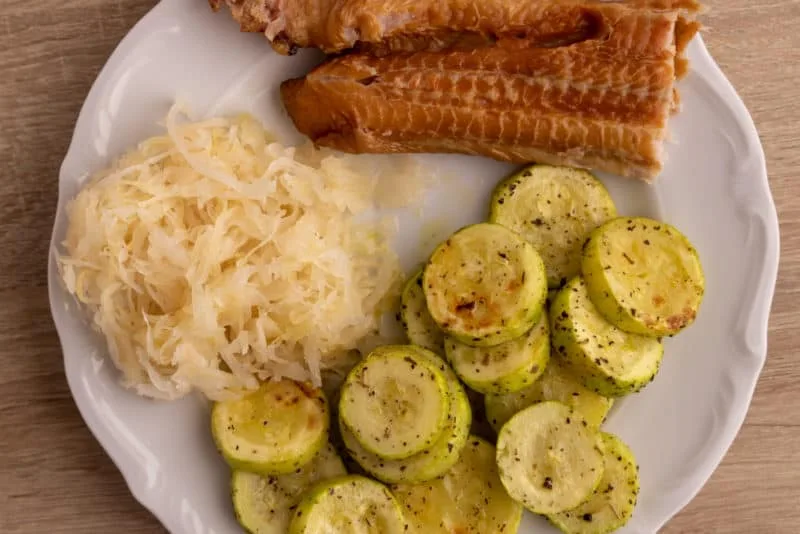
How Long Does Zucchini Last?
Fresh zucchinis last for 7 to 10 days in the fridge and 1 to 2 days on the counter. Cooked zucchinis and any leftovers keep for 3 to 4 days.
While many sources say zucchini keeps up to a week ([USU]), I found that it often retains quality for a couple of extra days. That’s where the recommendation above comes from.
Like with all veggies, including butternut squash and spaghetti squash, the better ones you pick in the supermarket, the longer they’ll last.
Here’s what to look for when picking zucchinis ([USU]):
- select small and firm ones, possibly blemish-free
- choose zucchinis with glossy skin, as those have small seeds
- avoid large specimens with a dull surface – those usually have large seeds and stringy flesh
- make sure the veggie is heavy for its size
If you follow those simple guidelines, you should be happy with the zucchinis that you bring home.
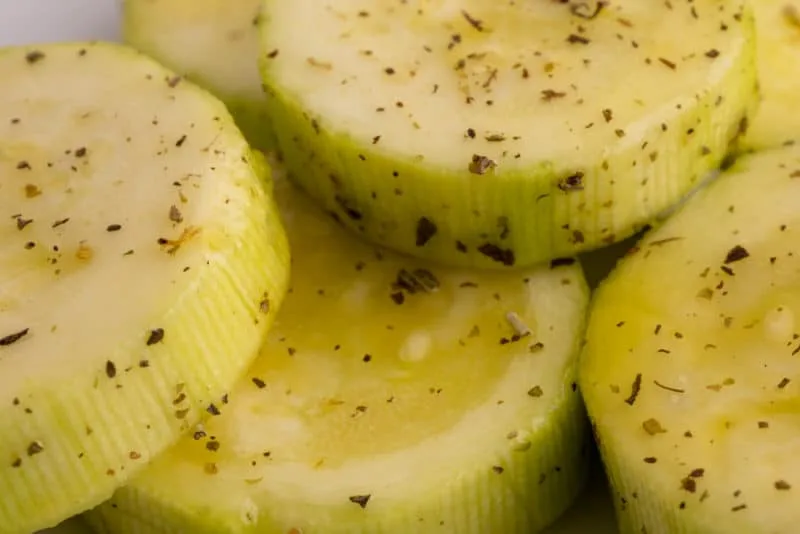
How To Tell If Zucchini Has Gone Bad?
To tell if your zucchini is safe to eat, check the following:
- Weight and firmness. If the veggie feels hollow or is super soft, it’s lost most of its water. And at that point, it’s no good.
- The skin. Some signs of decay, like slight wrinkling or small damaged spots, are okay. But if rot takes over or the whole veggie has wilted, it’s done for.
- The flesh. If you’ve cut up the veggie and it sits in the fridge for a couple of days already, check it thoroughly before eating. And if you see any signs of mold, discard it.
- The smell. If it smells sour or off in any other way, throw it out. Unless, of course, it smells like sausage and you stored it next to a pack of loosely wrapped sausage. If that’s the case, try to do a better job of storing smelly foods next time.
If you notice that your zucchini starts to go soft or wilting, use it right away. Otherwise, you’ll have to discard it in a day or two.
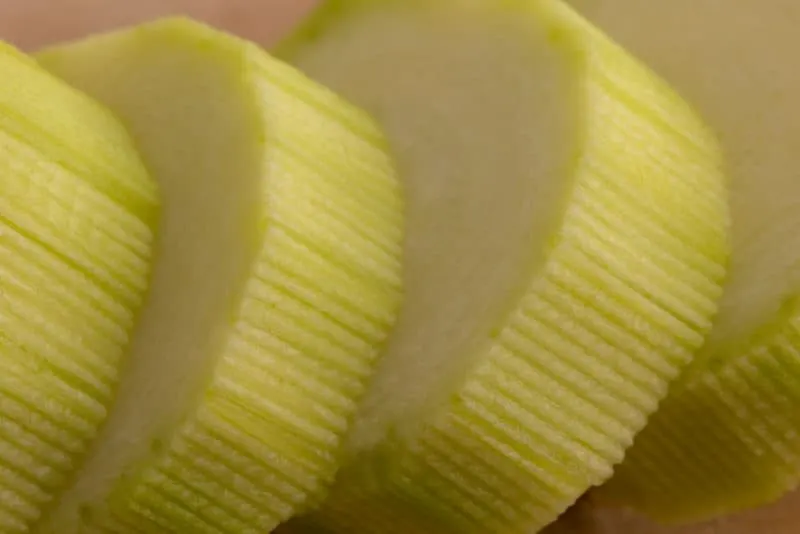
Summary
- Keep zucchinis in the veggie drawer in a plastic bag. Keep the bag open if water tends to build up.
- Zucchinis last for between 7 and 10 days if you pick fresh and quality ones.
- Choose zucchinis with glossy skin, not the dull ones. The latter often have large seeds and are stringy.
- Discard zucchinis that are soft, feel hollow, are rotten or moldy. If you notice that yours is deteriorating, use it as soon as possible.